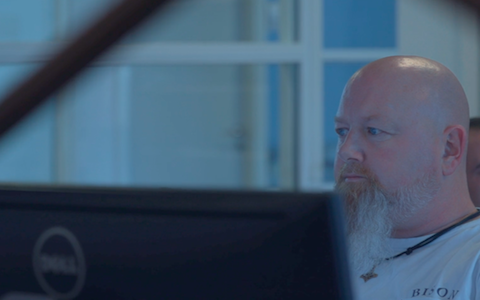Agile would be unthinkable without sprint retrospectives, and any teams can and should make these regular meetings a part of their corporate culture. .
If you feel uncertainty at this point, our up-to-date guide is just for you! Let’s draw a good portion of inspiration from the best sprint retrospective examples.
In this post, we run you through some essential basics and discuss what a sprint retrospective is, how it looks like, what red flags may turn into decisive obstacles, and how to avoid them from the start. Keep reading!
With this article, you will learn the following:
- Sprint Retrospective Basics: Definition, Structure, Things to Avoid
- Six Inspiring Sprint Retrospective Examples
- Some Food for Thought
Before reading the article, we suggest you familiarize yourself with our company by watching the video.
Sprint Retrospective Basics: Definition, Structure, Things to Avoid
What Is a Sprint Retrospective?
Suppose that we all speak the same language and run Agile sprints with our eyes closed. If not, check our previous post on this topic.
A sprint retrospective is the fourth and final event in a continuous development process, namely Agile sprint cycle. This kind of meeting is determined to collect feedback on the strengths and weaknesses the latter sprint had. This way teams can identify sagging spots and take action.
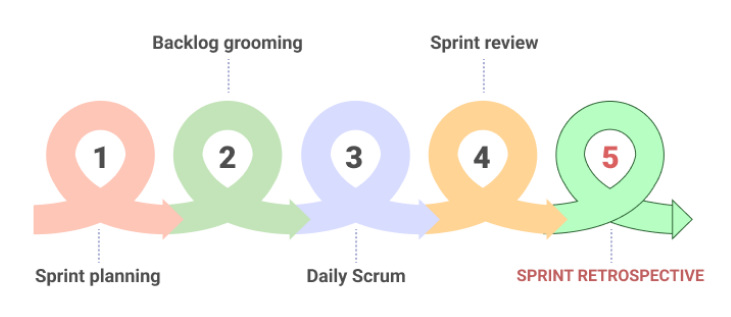
What does it look like? The facilitator, which is typically a Scrum master, encourages the audience to share their thoughts freely so that everyone’s voice will be heard. The agenda is to celebrate successes, learn from past mistakes, and shortlist some actionable solutions for the next cycles.
Note Sprint Retrospective ≠ Sprint Review: while the Review brings together all the stakeholders involved to evaluate the sprint’s deliverables and plan the following sprint, the Retrospective closes the cycle and gathers opinions on what and how could be improved in the future.
Migrate to secure hosting
Don't waste your time on Redmine maintenance. Hire experts and focus on your projects
The Sprint Retrospective Key Elements
No matter what, most sprint retrospectives include the following components:
- The biggest win: The team discusses the things everyone did well, then tries to find the common forward-moving factor. To keep motivation, the Scrum master asks what made colleagues feel that their input is appreciated.
- The biggest challenge: The team discusses the pitfalls that held them back during the current sprint to examine them before moving further. To identify the problem root, the Scrum master asks what made team members insecure or unhappy.
- Hypotheses: The team tries to elaborate measures to better deliverables in the future. They involve: possible risks to be aware of; improvement areas; personal/collective requests, etc.
What Is Better to Avoid during Sprint Retrospective Meetings?
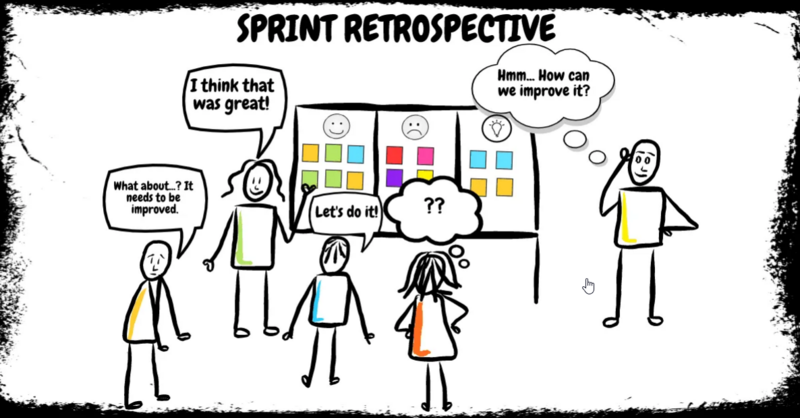
Still, no one is immune from coming a cropper, so you need to be alert and distrust the traps. To keep a very strong relationship within the team, mind these five things:
- Do not judge. A sprint retrospective is a safe space, so any judgmental attitude may hurt your colleagues and destroy a unique friendly atmosphere.
- You criticize, suggest. Brainstorming is a creative problem-solving method where all play on the same team. If you disagree with this or that idea, present your side of the dispute and give an alternative.
- Experiment with the format. Do not make these meetings annoyingly routine. People need the kick to feel alive, that’s why you should rebrand the format from time to time. For example, change the frequency, the number of attendees or even the process itself (keep reading to find out 7 great sprint retrospectives!).
- Be a mediator, not a babysitter. You should not take full responsibility and fix everything by yourself, rather empower your team to align on a common vision and show independence.
- Turn words into action and stay on top of things. Sprint retrospectives are aimed to boost team efficiency. This implies actions, not empty rhetoric. Thus, after your meeting is finished, keep an eye on the execution of your roadmap.
RedmineUP Solutions
Extend your Redmine functionality with our solutions and services
Six Inspiring Sprint Retrospective Examples
Again, you need to make your sprint retrospective meetings entertaining and fresh so that your team gets the most out of them. For this reason, we have gathered six superefficient yet fascinating ideas for you. Get inspired!
1. The Sailboat Technique
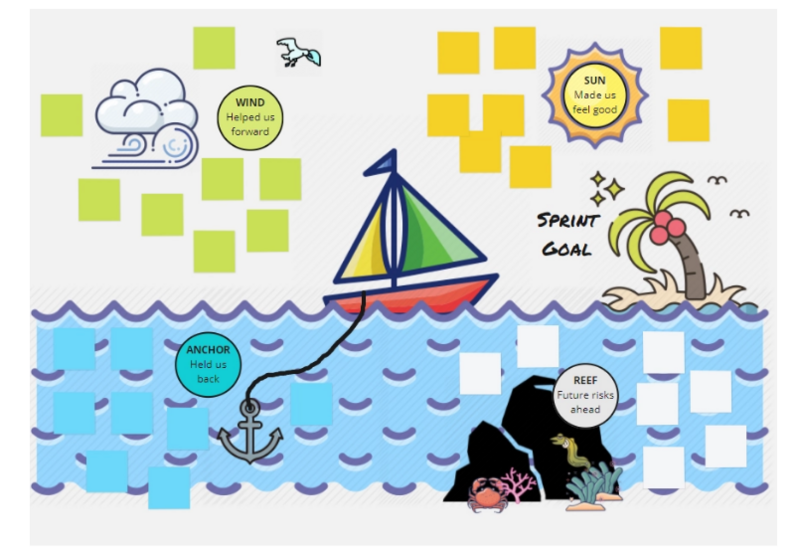
Our first example is really metaphoric, but it gives a team easy-to-understand visual context and a starting point for discussion. A sailboard represents your team. It is heading toward an island, which is your team’s goal. The sea is unpredictable, so are the things like the wind or the sun, which are pushing the sailboat forward, or like an anchor, which are, on the contrary, slowing it down.
The anchors or, put it another way, obstacles may cover a variety of things: poor communication, cumbersome group hierarchy, unrealistic deadlines, ill-conceived project strategy, etc. The same diversity applies to the things that make your team perform tasks successfully: team cooperation, solid research, regular refinement sessions, etc. Another important component is rocks or icebergs that you have in the distance. These are the risks that have not yet attacked your sailboat but could have a certain negative impact soon.
Once your picture is visualized, ask everyone to come and fill in each category. Then group the similar ideas and discuss them with the team. To involve everyone, you can assign a team member to each category. Prioritize things and make a list of action items. Finally, decide who is going to be responsible for each task to address them during the next meeting.
2. Mad Sad Glad
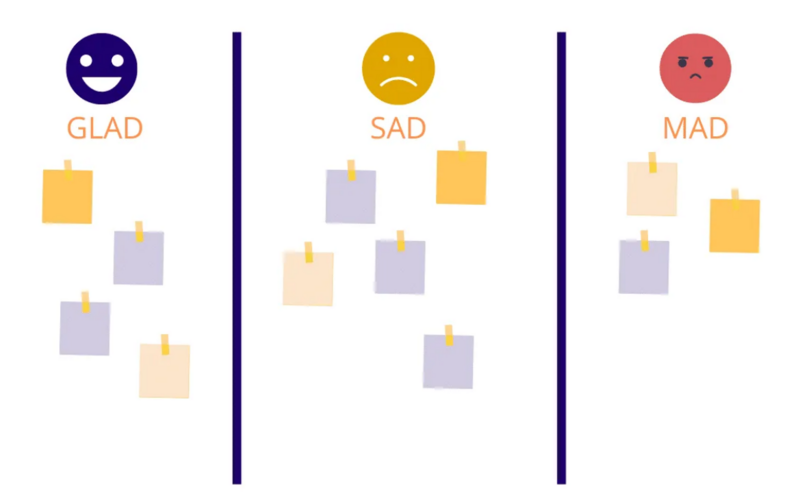
Do not get scared, it is not a kindergarten activity that you may have thought of. This technique is just a perfect way to help your team share their emotions at work openly.
Mad Sad Glad provides a solid structure to look back at the previous sprint and express how everyone is feeling. So, a team member writes down a fact and then places this fact into one of these three columns. Boom! You have a therapy session to group complaints and discuss them in a comfortable manner.
RedmineUP Solutions
Extend your Redmine functionality with our solutions and services
3. Dot Voting
One of the most effective and simple techniques is called Dot Voting. It is a great decision-making technique in which each team member is given several tokens a.k.a dots. They can be assigned to a specific option or a list of them.
It is all about priorities. Do not want to spend much time on sprint retrospective discussions and still gather mindful insights? Then this super-flexible kind of team activity is for you! The rule of thumb here is an equal number of dots for everyone involved. The tokens may have different values as if it was a sort of currency. Well, here starts the voting process, preferably in silent mode. After this part is done, decide upon the winner option.
Migrate to secure hosting
Don't waste your time on Redmine maintenance. Hire experts and focus on your projects
4. Each One Meets All
This technique enables us to have speed dating but in the finest tradition of Agile. It focuses on face-to-face communication in which people form pairs and try to get to know each other.
This fun team-building activity is easier to organize in an office. Nevertheless, remote teams can also enjoy networking. The main thing is that everyone finds value in the process. Create virtual rooms and throw a small talk. Discuss the previous sprint and share direct feedback. Be candid and outgoing. And do not forget to smile!
5. Three Little Pigs
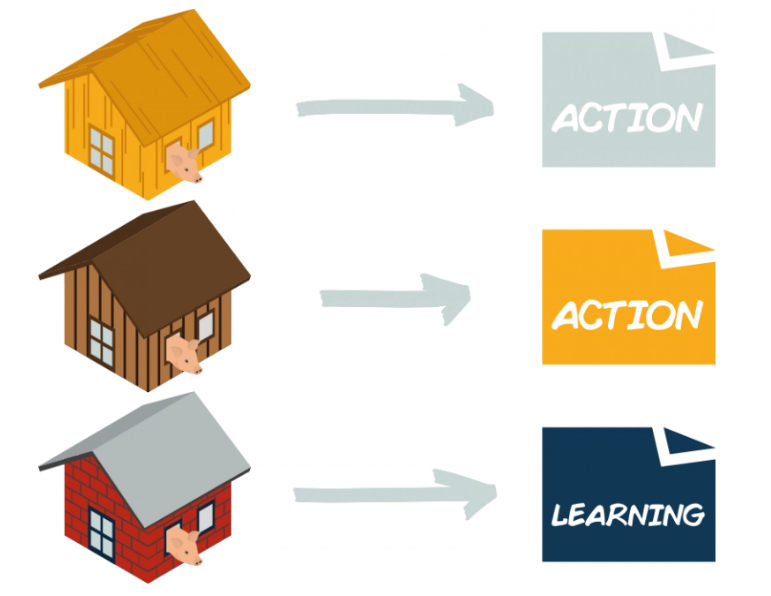
Another creative example of holding a sprint retrospective is inspired by a world-known fairytale Three Little Pigs.
Following the storyline, there are three main categories in the technique: The House of Straw (the things that were not really working), The House of Sticks (the things that were only partially effective and stable), and The House of Bricks (the things that have worked out). Needless to say, the sections are still quite loose, but it is their open-ended nature that empower teams to divide the sprint into bits without being limited.
Basically, this type of retrospective centers around blind unstable spots and fosters a team conversation to make their processes more solid and actionable. And one more thing: if you are working online, the format will fit your team perfectly. Just choose a powerful tool like RedmineUP and let this adventure begin!
6. Feedback Grid
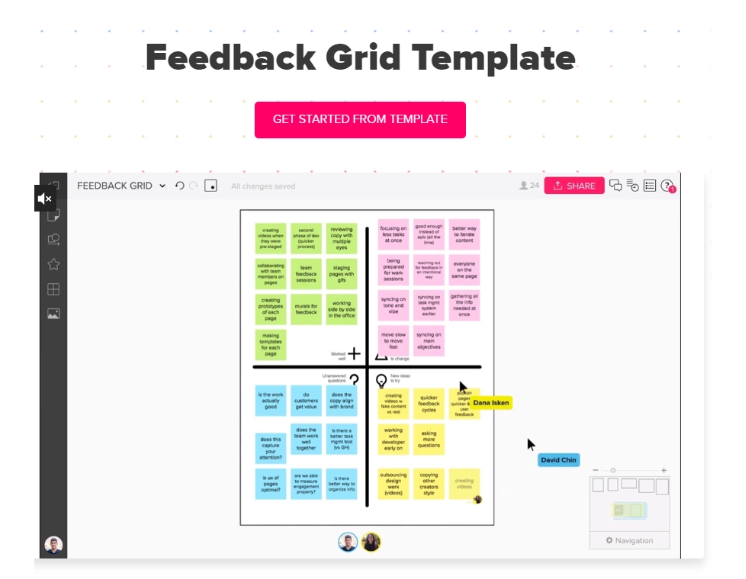
The last but certainly not the least, Feedback Grid is a technique the name of which speaks for itself. An open grid is divided into four quadrants. Give them any name that you can make up: for example, Likes, Dislikes, Ideas, and Questions.
Then divide your team into small discussion groups so that each of them comes up with their own list of thoughts. Cluster similar ideas and get through every piece of feedback. Foster a conversation and make sure that no one is zoning out.
RedmineUP Solutions
Extend your Redmine functionality with our solutions and services
Some Food for Thought
We have discussed our top six ideas on how to better a sprint retrospective, but there are no limits here. The only thing that you must bear in mind is the following: the best way to have sprint retrospectives beneficial and fruitful is to make them interactive and comfortable for everyone involved. And this is precisely a kind of service we are offering to our clients. Join our RedmineUP community and dive into this exciting Agile world!
Learn from our video below where to find the Sprint filter on your Agile board in Redmine.

